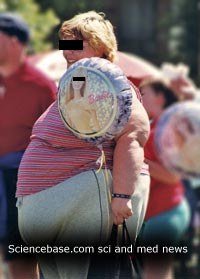With regulations set to ban incandescent light bulbs, the illuminating invention we’ve used since the nineteenth century, a replacement is needed. LEDs hold promise but are dim compared with the bulbs they seek to replace. Compact fluorescent tubes, are a bright idea. They are essentially a miniaturised version of the strip lighting by which shoppers and workers everywhere have been lit for decades. These CFLs use a fraction of the power to produce the same level of light as their incandescent ancestors and so are often touted as eco-bulbs in popular commentary.
Unfortunately, as the ban on incandescent tungsten bulbs spreads, so to are news stories in the media warning of the mercury content of CFLs and how breaking one in a child’s bedroom could expose them to serious risk of neurological damage and require a costly cleanup.
Just this week, the same warnings have been trotted out in various outlets including prominent website NowPublic.* To lend some credence to the NowPublic story, the writer cites the case of Brandy Bridges, from Maine, who apparently, went through a nightmare when a CFL broke in her daughter’s room. More fool her. The case was described on the Hoax Slayer site way back in May 2007 (so how this is suddenly now news, I don’t know). Hoax Slayer as the name would suggest, takes popular received wisdom and reveals the inner truth. Apparently, except for the immediate area of carpet on which the bulb had broken, mercury levels were way below the WHO safety limits on this substance.
[* I’m not even going to start on the EMF concerns and references to “dirty electricity” the NowPublic article talks about.]
“CFLs do contain mercury (Hg) but an environmental cleanup crew is not required if a CFL breaks,” Hoax Slayer asserts.
The amount each bulb contains is tiny, especially if you compare it to the amount in countless mercury thermometers used to measure body temperature, or help you decide whether to open or shut your greenhouse windows.
Indeed, mercury sealed within the glass tubing of a CFL amounts to about 5 milligrams, a small full-stop, or period, worth. No mercury is released when the bulbs are intact or being used. The mercury is present in the bulb as a vapour that glows when an electrical discharge is passed through it, giving the bright white light. Those mercury thermometers of which millions have been placed under childrens’ tongues to take their temperature for decades contain several hundred milligrams mercury. You would need 100 CFLs to equate to that amount of mercury. When faced with a feverish child how many people worried about the mercury thermometer breaking and leaking liquid mercury into their child’s mouth?
Mercury is expensive, so CFL manufacturers, ever looking for ways to cut costs, are constantly striving to boost the efficiency of their products but at the same time reduce the mercury content. It’s more about profit than safety concerns. Nevertheless, the next generation of CFLs which will be marketed this year, according to the US National Electrical Manufacturers Association, will have even less than a minute amount of mercury in them.
What to do if you break a CFL
The EPA provides information on what to do if a fluorescent light bulb (compact or strip) breaks, or indeed a mercury thermometer for those yet to go digital or liquid crystal. Basically, clean up involves opening a window, leaving the room for quarter of an hour, and then cleaning up the debris as best you can without using a vacuum cleaner, while wearing disposable rubber gloves and using a piece of stiff cardboard as a scoop or duct tape to pick up smaller fragments. A disposable wet wipe could then be used to clean the affected area. You must then put the debris in a plastic bag seal it, and then dispose of the waste according to local rules. Finally, wash your hands and then vacuum the area where the bulb was broken. All sounds very simple and sensible and pretty much what you would do if you broke an incandescent bulb, but with a little extra caution regarding that small amount of mercury.
Timely, then a review of mercury toxicity is published this week in the International Journal of Environment and Health. In the paper, Iman Al-Saleh
of the Environmental Health Section, at King Faisal Specialist Hospital & Research Centre, in Riyadh, Saudi Arabia, discusses the three chemical forms in which mercury is usually found: elemental (liquid mercury, amalgams, or vapour), organic (bound to a carbon-containing material), inorganic (mercury salts).
“Diet, especially fish and other seafood, is the main source of exposure of the general public to organic mercury. Dental amalgam is the most important source for elemental mercury vapour in the general population. Inorganic mercury compounds are known as mercuric salts, which are sometimes used in skin-lightening creams and as antiseptic creams and ointments,” says Al-Saleh.
Thiomersal, thiomerosal
Thiomersal, sodium ethylmercurithiosalicylate, is the sodium salt of an organic mercury compound and represents another exposure route. Thiomersal is known as thimerosal and Merthiolate in the US and was commonly used as an antibacterial agent in vaccine packaging. Presumably, thiomersal has saved thousands of lives by preventing potentially lethal Staphylococcus infections in those being vaccinated.
Nevertheless, it is use is now being phased out in the developed world through safety legislation, but it is still in use in Saudi Arabia, Al-Saleh points out, and elsewhere.
Al-Saleh’s extensive review of research into mercury toxicity does suggest that there is a need to evaluate antenatal and postnatal exposure to different forms of organic and inorganic mercury, especially given concerns regarding delayed neurological development in different age groups. This ongoing research will provide science-based evidence, rather than hearsay and scaremongering, regarding mercury exposure and provide healthcare providers and policymakers with the facts. Spurious anecdotes about paranoid parents panicked by environmental cleanup firms out to make a fast buck should not figure in this evidence.
![]() Iman A. Al-Saleh (2009). Health implications of mercury exposure in children International Journal of Environment and Health, 3 (1), 22-57
Iman A. Al-Saleh (2009). Health implications of mercury exposure in children International Journal of Environment and Health, 3 (1), 22-57
 I recently reported on the spit test being developed for autism spectrum disorder (ASD). It’s in the very early stages of development (this is not an antenatal test), but the details were certainly of interest to the target audience on the SpecNOW site.
I recently reported on the spit test being developed for autism spectrum disorder (ASD). It’s in the very early stages of development (this is not an antenatal test), but the details were certainly of interest to the target audience on the SpecNOW site. UPDATED: Is it possible that obesity, like the common cold is infectious? You’d think so if you believed research that’s been carried out over the last decade and hits the tabloid headlines again this week.
UPDATED: Is it possible that obesity, like the common cold is infectious? You’d think so if you believed research that’s been carried out over the last decade and hits the tabloid headlines again this week. It certainly does unweave the rainbow; and that’s a good thing. To my mind, rainbows are more wonderful because now I have a feeling for how they work as well as an aesthetic appreciation of the natural beauty. I’m sure Newton would agree. A rose by any other name smells sweeter if you can envisage the chemistry that produces its scent, and I’m sure Shakespeare would agree with me on that point too!
It certainly does unweave the rainbow; and that’s a good thing. To my mind, rainbows are more wonderful because now I have a feeling for how they work as well as an aesthetic appreciation of the natural beauty. I’m sure Newton would agree. A rose by any other name smells sweeter if you can envisage the chemistry that produces its scent, and I’m sure Shakespeare would agree with me on that point too! First story to fall under the gaze of The Alchemist this week is synthetic HDL, a potential alternative therapy for cholesterol problems wrought through gold nanotechnology. Next, we hear of atomic ink that avoids the push and shove of microscopic manipulation by introducing the metallic nano swap meet.
First story to fall under the gaze of The Alchemist this week is synthetic HDL, a potential alternative therapy for cholesterol problems wrought through gold nanotechnology. Next, we hear of atomic ink that avoids the push and shove of microscopic manipulation by introducing the metallic nano swap meet. Yellow and black bile were considered by the ancients as two of the four vital humours of the human body along with phlegm and blood. Ancient and mediaeval Greco-Roman alternative medicine. Imbalances in these humours caused illness. The Greek names for the terms gave rise to the words “choler” (bile) [the prefix in cholesterol, of course] and “melancholia” (black bile). Excessive bile was supposed to produce an aggressive temperament, known as “choleric” and cause “biliousness.” Depression and other mental illnesses (melancholia) were ascribed to a bodily surplus of black bile.
Yellow and black bile were considered by the ancients as two of the four vital humours of the human body along with phlegm and blood. Ancient and mediaeval Greco-Roman alternative medicine. Imbalances in these humours caused illness. The Greek names for the terms gave rise to the words “choler” (bile) [the prefix in cholesterol, of course] and “melancholia” (black bile). Excessive bile was supposed to produce an aggressive temperament, known as “choleric” and cause “biliousness.” Depression and other mental illnesses (melancholia) were ascribed to a bodily surplus of black bile. On 4th October 1957, the Soviets made the shock announcement that they had sent the first craft ever into orbit around the Earth. The Americans were stunned, how could the USSR have stolen a march on them in this way. That shock then turned to fear with the realisation that the Soviets were obviously that much more technologically advanced than they had suspected.
On 4th October 1957, the Soviets made the shock announcement that they had sent the first craft ever into orbit around the Earth. The Americans were stunned, how could the USSR have stolen a march on them in this way. That shock then turned to fear with the realisation that the Soviets were obviously that much more technologically advanced than they had suspected.